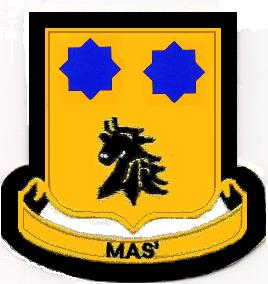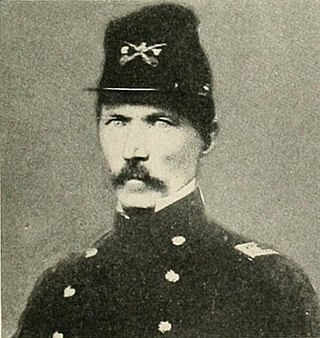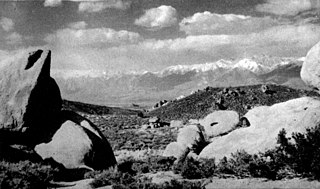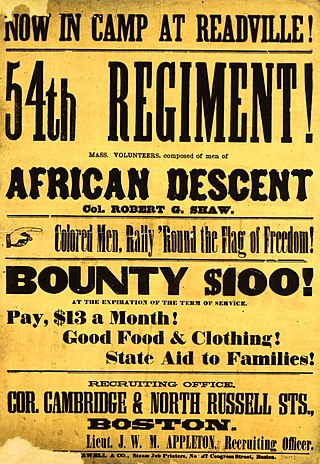Related Research Articles

Mercer County is a county located in the central part of the U.S. Commonwealth of Kentucky. As of the 2020 census, the population was 23,772. Its county seat is Harrodsburg. The county was formed from Lincoln County, Virginia in 1785 and is named for Revolutionary War General Hugh Mercer, who was killed at the Battle of Princeton in 1777. It was formerly a prohibition or dry county.

Chinese Camp is a census-designated place (CDP) in Tuolumne County, California, United States. The population was 126 at the 2010 census, down from 146 at the 2000 census. It lies in the grassy foothills of the Sierra Nevada near the southern end of California's Gold Country.

Hempstead is a city in and the county seat of Waller County, Texas, United States, part of the Houston–The Woodlands–Sugar Land metropolitan area.

Fort Larned National Historic Site preserves Fort Larned which operated from 1859 to 1878. It is approximately 5.5 miles (8.9 km) west of Larned, Kansas, United States.
The Battle of Roan's Tan Yard, also known as the Battle of Silver Creek, was a minor battle fought during the American Civil War on January 8, 1862, in Randolph County, Missouri. After back-and-forth operations throughout 1861, the pro-Confederate Missouri State Guard under the command of Sterling Price had been confined to southwestern Missouri. In December 1861, Price authorized recruiting and raiding activities in the central portion of the state, with the North Missouri Railroad being a major target. In January 1862, Major W. M. G. Torrence of the Union Army located a Missouri State Guard base in Randolph County and attacked it on January 8 with elements of four cavalry regiments. The camp, which was commanded by Colonel John A. Poindexter, put up little resistance and was soon overrun. Large quantities of supplies were captured in the abandoned camp, which was destroyed. The action at Roan's Tan Yard, along with a Missouri State Guard defeat at the Battle of Mount Zion Church the preceding December, led to a decrease in pro-Confederate activity in central Missouri.

California's involvement in the American Civil War included sending gold east to support the war effort, recruiting volunteer combat units to replace regular U.S. Army units sent east, in the area west of the Rocky Mountains, maintaining and building numerous camps and fortifications, suppressing secessionist activity and securing the New Mexico Territory against the Confederacy. The State of California did not send its units east, but many citizens traveled east and joined the Union Army there, some of whom became famous.
The Pacific coast theater of the American Civil War consists of major military operations in the United States on the Pacific Ocean and in the states and Territories west of the Continental Divide. The theater was encompassed by the Department of the Pacific that included the states of California, Oregon, and Nevada, the territories of Washington, Utah, and later Idaho.

The 2nd Regiment California Volunteer Cavalry was a cavalry regiment in the Union Army during the American Civil War. It spent its entire term of service in the western United States, with most of its companies dispersed to various posts.

Fort McDermit was an U.S. Army fort in Nevada. It was established on August 14, 1865, by Captain J. C. Doughty, of Company I of the 2nd Regiment California Volunteer Cavalry, on orders of Lt. Col. Charles McDermit, Commander, Military District Nevada, as the Quinn River Camp No. 33. It was located near Quinn River Station on the East Fork of the Quinn River.
George Spafford Evans was a military officer, miner, businessman, County Clerk for Tuolumne County, Customs official and Senate Clerk for the State of California.
The Second Army Corps was a unit of the United States Army raised for the Spanish–American War. A defining event of the Spanish–American War was the typhoid fever epidemic of July to November 1898. The Army consequently undertook a series of mass-retreats and attempted evasions. The Typhoid Board concluded that only one of the five army corps stricken with epidemic typhoid succeeded in suppressing the disease actively, the 2nd Army Corps. In the wake of two fruitless relocations and months of casualties, commanders finally managed to impose an effective latrine-policy. A three-part strategy of draconian defecation-management, mass-disinfection, and flight received the Typhoid Board's imprimatur as the principal, recommended method for suppressing existing epidemics.
Camp Bidwell, later Camp Chico, was a U.S. Army post during the American Civil War. Camp Bidwell was named for John Bidwell, the founder of the nearby town of Chico, California, and a brigadier general of the California Militia. It was established a mile outside Chico, by Lt. Col. Ambrose E. Hooker with Company A, 6th California Infantry, on August 26, 1863. Although a Company F, 2nd California Cavalry and Company K, 2nd California Infantry under Captain Augustus W. Starr had been there from July 31, 1863, Lt. Col. Hooker moved the camp to a new location for its better defense and for better sanitation.

The 28th Cavalry Regiment (Horse) (Colored) was a short-lived African-American unit of the United States Army. The 28th Cavalry was the last horse-mounted cavalry regiment formed by the U.S. Army. The regiment was formed as part of the 2nd Cavalry Division in 1943 and inactivated in North Africa in 1944 without seeing combat.

Edward McGarry was an officer in the Mexican American War, a Californian politician, and officer of California Volunteers in the American Civil War. He led cavalry at the Bear River Massacre, was later colonel of the 2nd California Cavalry, and later commander of the District of California. He received a brevet promotion to brigadier general of volunteers. After the Civil War he rejoined the U. S. Army as a lieutenant colonel.
Camp Stanford was an American Civil War tent camp established on March 3, 1863, in present-day Stockton, California. It was located in the then undeveloped perimeter of the city, occupying two square blocks of land, now bounded by Rose, Acacia, Van Buren and Monroe streets.

The Owens Valley War was fought between 1862 and 1863, by California Volunteers and local settlers against the Owens Valley Paiutes, and their Shoshone and Kawaiisu allies, in the Owens Valley of California and the southwestern Nevada border region. The removal of a large number of the Owens River Native Californians to Fort Tejon in 1863, was considered the end of the war. Minor hostilities continued occasionally until 1867.
The following list is a bibliography of American Civil War Confederate military unit histories and are generally available through inter-library loan. More details on each book are available at WorldCat. For an overall national view, see Bibliography of the American Civil War. For histories of the Union, see Bibliography of American Civil War Union military unit histories. For a guide to web sources see: Carter, Alice E.; Jensen, Richard. The Civil War on the Web: A Guide to the Very Best Sites—Completely Revised and Updated (2003).
The following list is a Bibliography of American Civil War Union military unit histories. More details on each book are available at WorldCat.

Pioneer Race Course, also known as the Pioneer Race Track, was a horse race track opened in March 1851, in the southern Mission District of San Francisco, California.

Camp Meigs is a former American Civil War training camp that existed from 1862 to 1865 in Readville, Massachusetts. It was combined from the former Camp Brigham and Camp Massasoit and trained the 54th Regiment Massachusetts Volunteer Infantry, among others. The 54th regiment was one of the first official African-American units in the United States during the Civil War. The former camps were merged into Camp Meigs in August 1862.
References
- ↑ Camp Alert (historical), CA, from http://itouchmap.com accessed June 2, 2013
- ↑ U.S. Geological Survey Geographic Names Information System: Camp Alert (California)
- ↑ Records of California men in the war of the rebellion 1861 to 1867 By California. Adjutant General's Office, SACRAMENTO: State Office, J. D. Young, Supt. State Printing. 1890. pp.168-303
- ↑ "Camp Alert". The California State Military Museum. Archived from the original on 2011-06-13.
Coordinates: 37°45′5″N122°24′58″W / 37.75139°N 122.41611°W